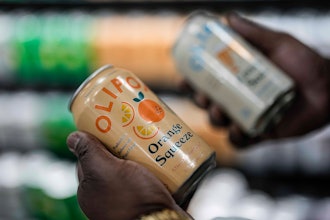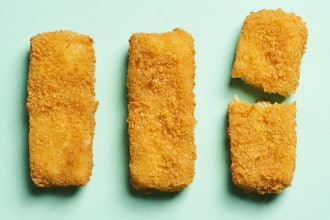Mini Wastewater Plant Recycles Vile Waste
Researchers at the University of South Florida (USF) have developed the NEWgenerator, a micro wastewater treatment plant that can generate, energy, nutrients, and even water from even the most vile wastewater that contains fecal matter and urine.
The NEWgenerator has its fans, particularly the Bill & Melinda Gates Foundation which just awarded the USF engineering team with a two-year, $1.14 million grant to install an updated version of the mini wastewater plant in South Africa.
The installation will be paired with a Community Ablution Block (CAB), essentially a shipping container with toilets, showers, and sinks. CABs are used in South Africa, but put a tremendous strain on the sewer systems. By pairing a CAB with a NEWgenerator, they should be able to work without being hooked up to the sewer lines.
The NEWgenerator uses anaerobic microorganisms to convert the organic material into biogas. When working in tandem with solar panels, the biogas helps the NEWgenerator run completely off the grid.
So how does it make water? It takes a couple of stages. First, a microscopic membrane filter traps the bacteria and viruses in the wastewater. The water that makes it through the filter is disinfected with chlorine, and the recycled water can be used for toilet flushing or irrigation. The nutrients recovered by the NEWgenerator can be used as fertilizer for community gardens
The researchers will head to South Africa in early 2018 to begin field testing, the second generation of the NEWgenerator could be able to serve up to 1,000 users a day. They team current unit maxes out at 100. The grant is part of the Bill & Melinda Gates Foundation’s efforts solve worldwide water and sanitation problems.
Boeing Gets Into Gamma Game
Boeing launched HorizonX in April 2016. The new division is charged with finding and investing in emerging technologies.
With a focus on aerospace and manufacturing, the division's first two investments included a company developing software for augmented reality wearables; and another that is designing hybrid electric airplanes. Two weeks ago, HorizonX invested in Near Earth Autonomy, a company that specializes in autonomous flight and was spun out Carnegie Mellon University's Robotics Institute.
For the division’s next investment, Horizon is getting into the materials game with Valencia, CA-based Gamma Alloys, an advanced materials producer working on applications that could reduce the weight and cost of materials. Boeing is the world’s largest aerospace company, so you can understand its interest in lighter weight and less expensive materials.
Gamma Alloys is developing advanced metal-matrix composites. The company was founded in 2008 and has since worked on nano-reinforced aluminum alloys. Gamma’s aluminum is reinforced with microscopic particles, or nanoparticles, to become stiffer, more resistant to wear, and stronger than current materials on the market across a wider range of temperatures.
According to Gamma CEO Mark Sommer, the company will be able to use the funding to accelerate nanoparticle material development as well as the full-scale industrialization of its manufacturing processes.
Gamma is HorizonX's sixth venture. The innovation cell has also invested in immersive virtual reality video; and security software powered by artificial intelligence.
Shark Spotter Spots Sharks
Northrup Grumman recently partnered with the San Diego Zoo to make a rugged hexacopter drone to observe polar bears in the natural habitat. The researchers are keen on finding a better way to keep them from having to put in face time with the white, toothy, beasts, but it turns out that they're not the only team trying to employ drones to observe and protect.
A team from the University of Technology Sydney (UTS) is developing the Shark Spotter, a system that uses machine learning and AI to employ an algorithm to drone footage to automatically detect sharks from video streamed from a Little Ripper Lifesaver UAVs. Little Ripper UAVs were created after Hurricane Katrina wreaked havoc on New Orleans in 2005. Ever since, the Ripper Group’s founder has looked for ways to employ UAVs in emergency situations to try and save lives.
The Shark Spotter would process publicly available video and use the algorithm to spot sharks in the water. Right now, the team is using archival footage to test the system and make sure that it can spot the difference between swimmers, surfers, and sharks.
Eventually, the team would like to develop a real-time warning system that would let people know if a shark had been spotted in the area.
This is Engineering By Design with David Mantey.






















